
Alan Garner is an English novelist best known for his children's fantasy novels and his retellings of traditional British folk tales. Much of his work is rooted in the landscape, history and folklore of his native county of Cheshire, North West England, being set in the region and making use of the native Cheshire dialect.

The bunyip is a creature from the aboriginal mythology of southeastern Australia, said to lurk in swamps, billabongs, creeks, riverbeds, and waterholes.
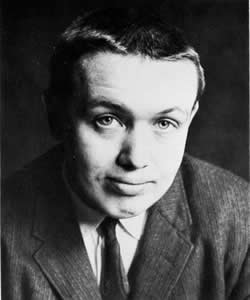
John Anthony Bellairs was an American author best known for his fantasy novel The Face in the Frost and many Gothic mystery novels for children featuring the characters Lewis Barnavelt, Rose Rita Pottinger, Johnny Dixon, and Anthony Monday. Most of his books were illustrated by Edward Gorey. Thirteen unfinished and original sequels to Bellairs' books have been written by Brad Strickland. At the time of his death, Bellairs' books had sold a quarter-million copies in hard cover and more than a million and a half copies in paperback.
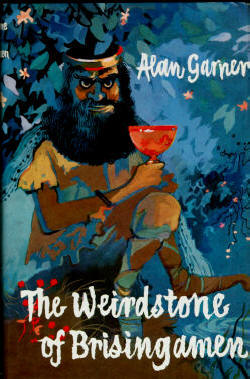
The Weirdstone of Brisingamen: A Tale of Alderley is a children's fantasy novel by English author Alan Garner. Garner began work on the novel, his literary debut, in 1957, after he moved into the late medieval house, Toad Hall, in Blackden, Cheshire. The story, which took the local legend of The Wizard of the Edge as a partial basis for the novel's plot, was influenced by the folklore and landscape of neighbouring Alderley Edge where he had grown up. Upon completion the book was picked up by Sir William Collins who released it through his publishing company Collins in 1960.

Thomas Alan Shippey is a British medievalist, a retired scholar of Middle and Old English literature as well as of modern fantasy and science fiction. He is considered one of the world's leading academic experts on the works of J. R. R. Tolkien about whom he has written several books and many scholarly papers. His book The Road to Middle-Earth has been called "the single best thing written on Tolkien".
"The Scouring of the Shire" is the penultimate chapter of J. R. R. Tolkien's fantasy The Lord of the Rings. The Fellowship hobbits, Frodo, Sam, Merry, and Pippin, return home to the Shire to find that it is under the brutal control of ruffians and their leader "Sharkey", revealed to be the Wizard Saruman. The ruffians have despoiled the Shire, cutting down trees and destroying old houses, as well as replacing the old mill with a larger one full of machinery which pollutes the air and the water. The hobbits rouse the Shire to rebellion, lead their fellow hobbits to victory in the Battle of Bywater, and end Saruman's rule.
Trolls are fictional characters in J. R. R. Tolkien's Middle-earth, and feature in films and games adapted from his novels. They are portrayed as monstrously large humanoids of great strength and poor intellect. In The Hobbit, like the dwarf Alviss of Norse mythology, they must be below ground before dawn or turn to stone, whereas in The Lord of the Rings they are able to face daylight.
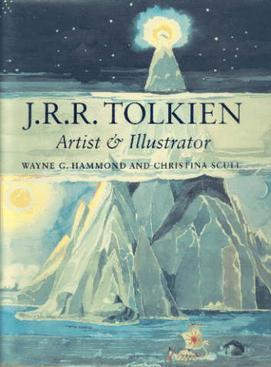
J. R. R. Tolkien: Artist and Illustrator is a collection of paintings and drawings by J. R. R. Tolkien for his stories, published posthumously in 1995. The book was edited by Wayne G. Hammond and Christina Scull. It won the 1996 Mythopoeic Scholarship Award for Inklings Studies. The nature and importance of Tolkien's artwork is discussed.
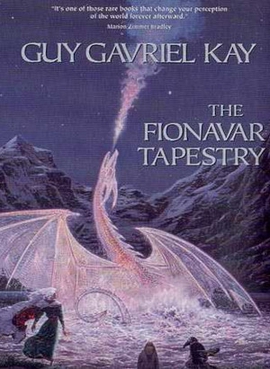
The Fionavar Tapestry is a trilogy of fantasy novels by Canadian author Guy Gavriel Kay, published between 1984 and 1986. The novels are set in both contemporary Toronto and the fictional world of Fionavar. The story follows five University of Toronto senior law and medical students who are drawn into the 'first world of the Tapestry' by the mage Loren Silvercloak. Once there, each discovers their own role and destiny in the framework of an ancient conflict.

The Mythopoeic Awards for literature and literary studies are given annually for outstanding works in the fields of myth, fantasy, and the scholarly study of these areas. Established by the Mythopoeic Society in 1971, the Mythopoeic Fantasy Award is given for "fiction in the spirit of the Inklings", and the Scholarship Award for non-fiction work. The award is a statuette of a seated lion, with a plaque on the base. It has drawn resemblance to, and is often called, the "Aslan".
Mythopoeia, or mythopoesis, is a narrative genre in modern literature and film where an artificial or fictionalized mythology is created by the writer of prose, poetry, or other literary forms. The concept was introduced by J. R. R. Tolkien in the 1930s. The authors in this genre integrate traditional mythological themes and archetypes into fiction. Mythopoeia is also the act of creating a mythology.
Brian Attebery is an American writer and emeritus professor of English and philosophy at Idaho State University. He is known for his studies of fantasy literature, including The Fantasy Tradition in American Literature: From Irving to Le Guin (1980) and Strategies of Fantasy (1992) which won the Mythopoeic Award. Attebery is also editor of the Journal of the Fantastic in the Arts, for which he received the World Fantasy Award in 2021. He has also won the IAFA Award for distinguished scholarship and the Pilgrim Award for lifetime achievement.

The Wood Wife is a novel by American writer Terri Windling, published by Tor Books in 1996. It won the Mythopoeic Award for Novel of the Year. It is Windling's first novel; she is better known as a longtime editor of fantasy and speculative fiction. Set in the mountain outskirts of contemporary Tucson, Arizona, the novel could equally be described as magical realism, contemporary fantasy, or mythic fiction. Windling draws on myth, folklore, poetry, and the history of surrealist art to tell the story of a woman who finds her muse in a spirited desert landscape. The plot revolves around a reclusive English poet, Davis Cooper, and his lover, Mexican surrealist painter Anna Naverra—a character reminiscent of the real-life Mexican painter Remedios Varo.

J. R. R. Tolkien: Author of the Century is a 2001 book of literary criticism written by Tom Shippey. It is about the work of the philologist and fantasy author J. R. R. Tolkien. In it, Shippey argues for the relevance of Tolkien today and attempts to firmly establish Tolkien's literary merits, based on analysis of The Hobbit, The Lord of the Rings, The Silmarillion, and Tolkien's shorter works.
J. R. R. Tolkien's fantasy books on Middle-earth, especially The Lord of the Rings and The Silmarillion, drew on a wide array of influences including language, Christianity, mythology, archaeology, ancient and modern literature, and personal experience. He was inspired primarily by his profession, philology; his work centred on the study of Old English literature, especially Beowulf, and he acknowledged its importance to his writings.
Alexei Kondratiev was an American author, linguist, and teacher of Celtic languages, folklore and culture. He taught the Irish language and Celtic history at the Irish Arts Center in Manhattan, New York from 1985 until his death on May 28, 2010. Nine editions of his book, The Apple Branch, were published in English and Spanish from 1998 to 2004. At various times, he taught all six of the living Celtic languages.
Character pairing in The Lord of the Rings is a literary device used by J. R. R. Tolkien, a Roman Catholic, to express some of the moral complexity of his major characters in his heroic romance, The Lord of the Rings. Commentators have noted that the format of a fantasy does not lend itself to subtlety of characterisation, but that pairing allows inner tensions to be expressed as linked opposites, including, in a psychoanalytic interpretation, those of Jungian archetypes.
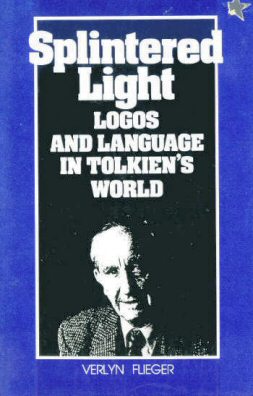
Splintered Light: Logos and Language in Tolkien's World is an 1983 book of literary criticism by the leading Tolkien scholar Verlyn Flieger, in which she argues that light is a central theme of Tolkien's Middle-earth mythology, in particular in The Silmarillion. It has been admired by other scholars to the extent that it has become a core element of Tolkien scholarship.

Unquenchable Fire is a 1988 fantasy novel by Rachel Pollack. It won the 1989 Arthur C. Clarke Award.
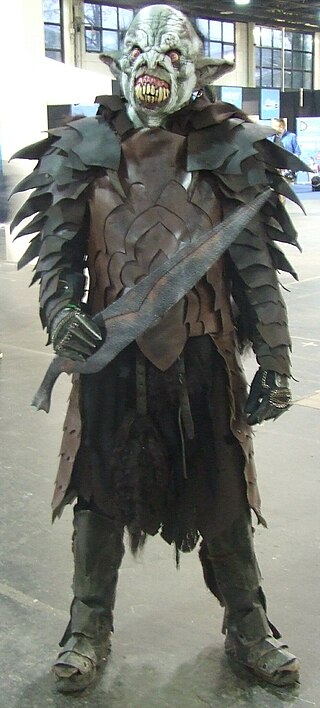
J. R. R. Tolkien has been called the "father of fantasy". His novel The Lord of the Rings, published in 1954–5, enormously influenced fantasy writing, establishing in particular the form of high or epic fantasy, set in a secondary or fantasy world in an act of mythopoeia. The book was distinctive at the time for its considerable length, its "epic" feel with a cast of heroic characters, its wide geography, and its battles. It involved an extensive history behind the action, an impression of depth, multiple sentient races and monsters, and powerful talismans. The story is a quest, with multiple subplots. The novel's success demonstrated that the genre was commercially distinct and viable.














